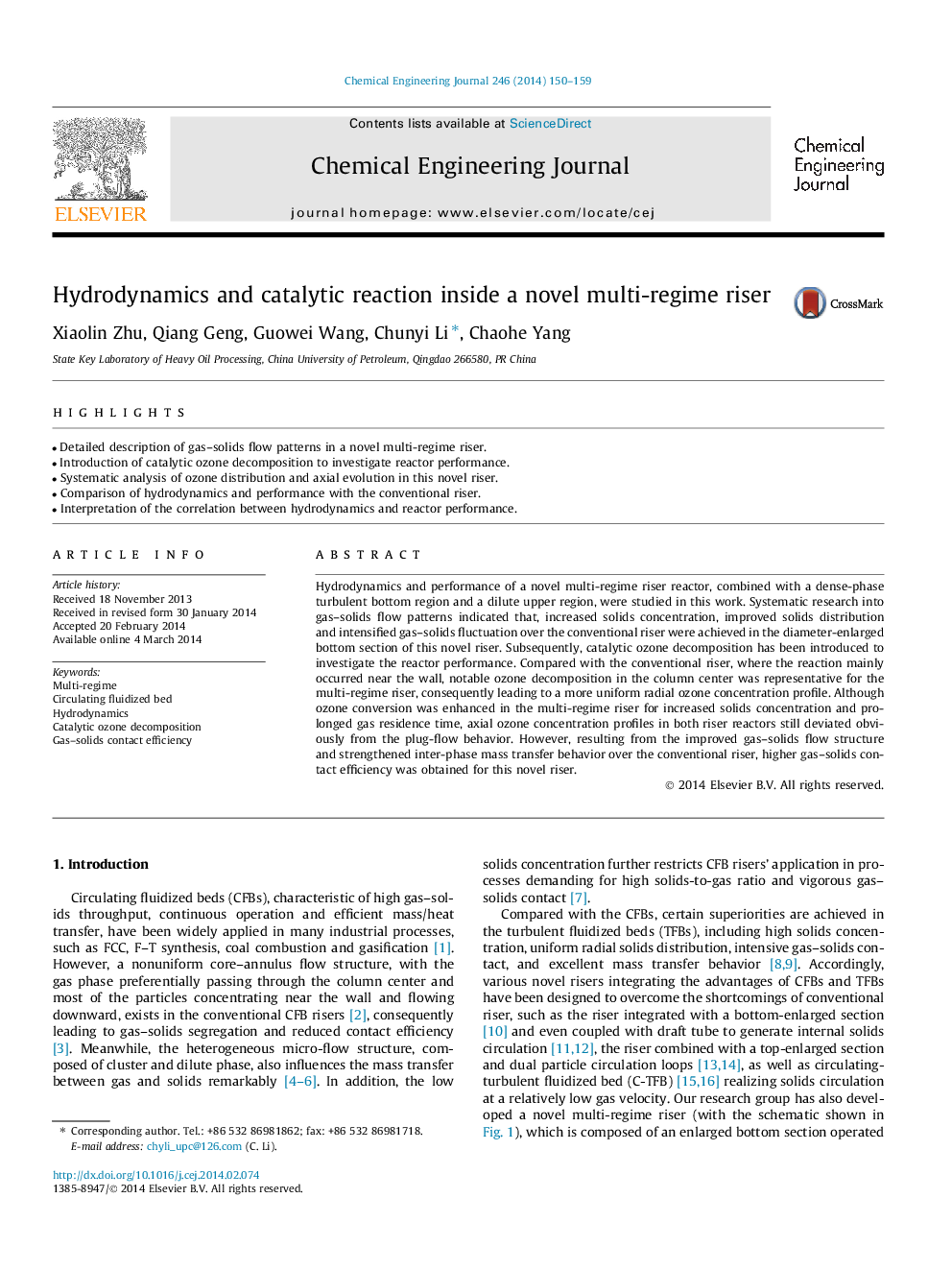| Article ID | Journal | Published Year | Pages | File Type |
|---|---|---|---|---|
| 147836 | Chemical Engineering Journal | 2014 | 10 Pages |
•Detailed description of gas–solids flow patterns in a novel multi-regime riser.•Introduction of catalytic ozone decomposition to investigate reactor performance.•Systematic analysis of ozone distribution and axial evolution in this novel riser.•Comparison of hydrodynamics and performance with the conventional riser.•Interpretation of the correlation between hydrodynamics and reactor performance.
Hydrodynamics and performance of a novel multi-regime riser reactor, combined with a dense-phase turbulent bottom region and a dilute upper region, were studied in this work. Systematic research into gas–solids flow patterns indicated that, increased solids concentration, improved solids distribution and intensified gas–solids fluctuation over the conventional riser were achieved in the diameter-enlarged bottom section of this novel riser. Subsequently, catalytic ozone decomposition has been introduced to investigate the reactor performance. Compared with the conventional riser, where the reaction mainly occurred near the wall, notable ozone decomposition in the column center was representative for the multi-regime riser, consequently leading to a more uniform radial ozone concentration profile. Although ozone conversion was enhanced in the multi-regime riser for increased solids concentration and prolonged gas residence time, axial ozone concentration profiles in both riser reactors still deviated obviously from the plug-flow behavior. However, resulting from the improved gas–solids flow structure and strengthened inter-phase mass transfer behavior over the conventional riser, higher gas–solids contact efficiency was obtained for this novel riser.
